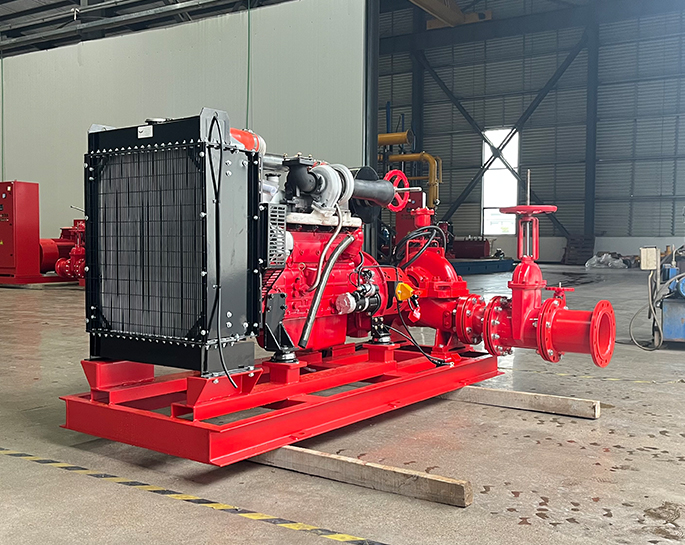What is an efficient and energy-saving fire pump?
Efficient and energy-saving fire pumps are essential for ensuring the reliability of fire protection systems while minimizing operational costs. Here are some features and considerations to look for in an efficient and energy-saving fire pump:
-
Variable Frequency Drives (VFDs): Fire pumps equipped with VFDs allow for variable speed operation based on demand. This means the pump can adjust its speed according to the required flow and pressure, reducing energy consumption during periods of low demand.
-
High-Efficiency Motors: Choose fire pumps with high-efficiency motors, such as those meeting the NEMA Premium Efficiency standards. These motors convert more electrical input into mechanical power, minimizing energy losses and reducing overall power consumption.
-
Hydraulic Efficiency: Opt for fire pumps with hydraulic designs that maximize efficiency. Well-designed impellers and casings can improve pump performance and reduce the energy required to achieve the desired flow and pressure.
-
Smart Control Systems: Implement intelligent control systems that can monitor and optimize pump performance. These systems can adjust pump speed, monitor system pressure, and respond to changes in demand, ensuring efficient operation while minimizing energy waste.
-
Regular Maintenance: A well-maintained fire pump operates more efficiently. Regularly inspect and maintain the pump, including lubricating bearings, checking alignment, and ensuring that the impeller is free from debris. Proper maintenance helps prevent energy losses due to wear and tear.
-
Energy Audits: Conduct periodic energy audits to identify areas for improvement in the fire protection system. These audits can help identify inefficiencies and provide recommendations for optimizing the system's energy performance.
-
Compliance with Standards: Ensure that the fire pump meets relevant industry standards and codes for efficiency. For example, pumps that comply with standards such as NFPA 20 are likely to incorporate features that enhance efficiency and reliability.
-
Proper Sizing: Select a fire pump that is properly sized for the specific application. An oversized pump can lead to unnecessary energy consumption and increased wear on components. Work with a qualified engineer to determine the correct pump size based on the requirements of the fire protection system.
-
Energy Recovery Systems: Some advanced fire pump systems may incorporate energy recovery systems, which capture and reuse energy that would otherwise be wasted. These systems can further enhance the overall energy efficiency of the fire protection system.
By considering these factors and investing in a well-designed and properly maintained fire pump system, you can help ensure the safety of your facility while minimizing energy consumption and operational costs.


.png)
.png)

.png)


